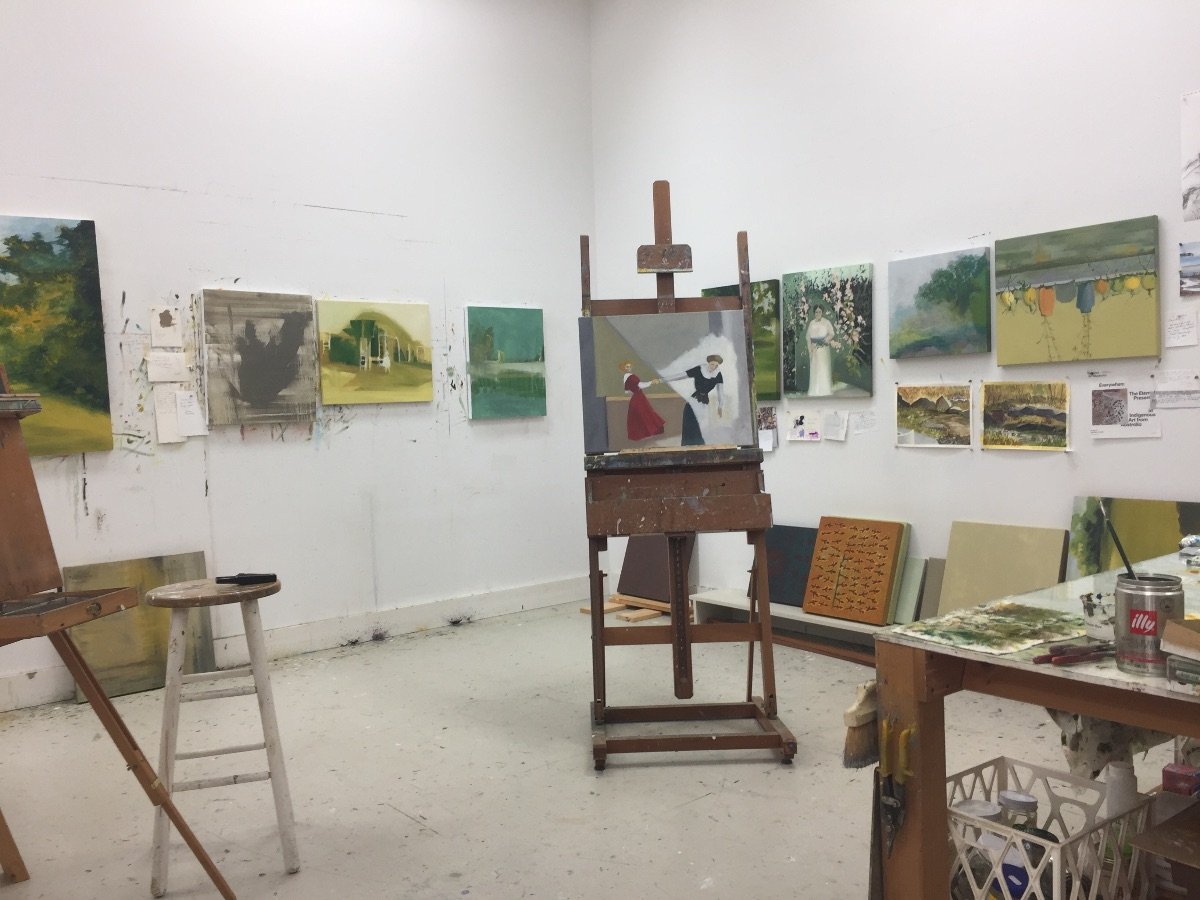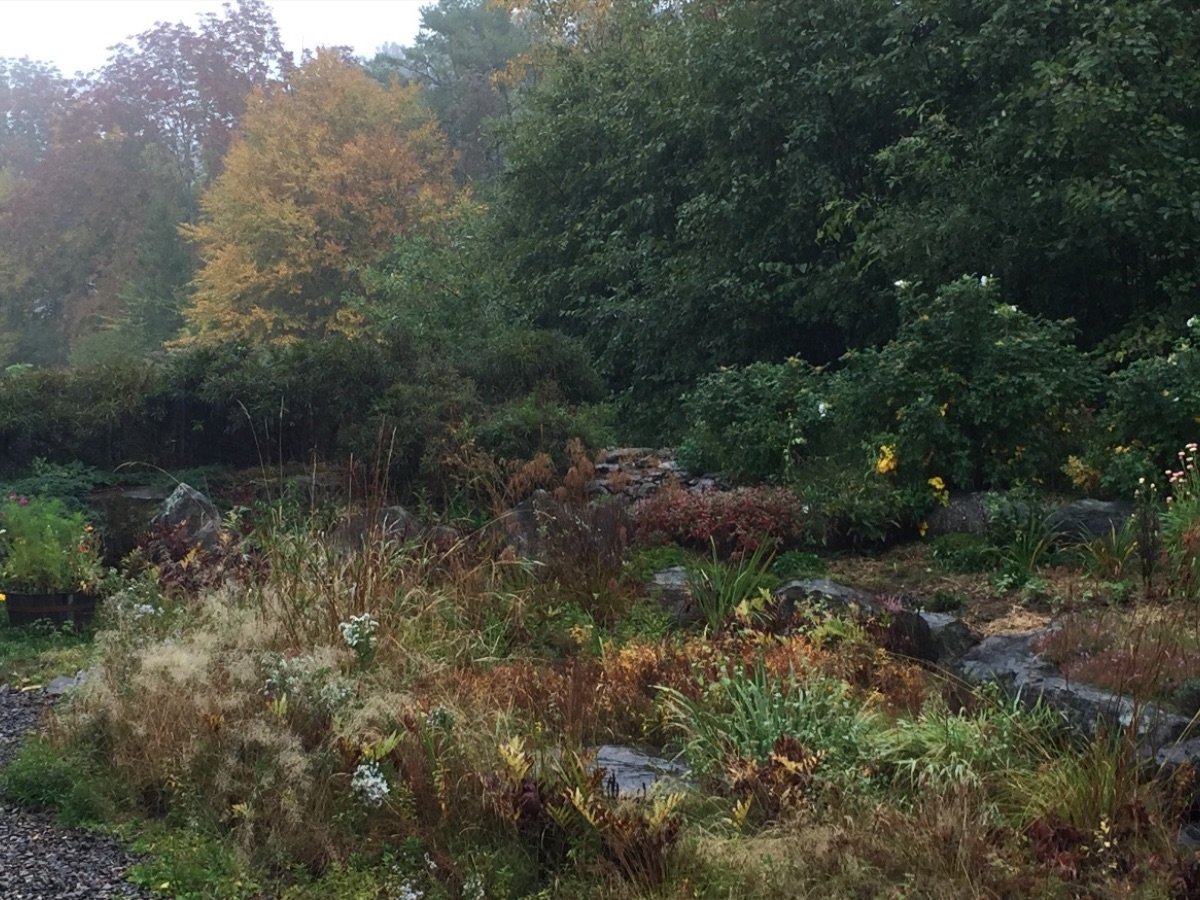Here, There, and Somewhere Else
Here, there, and somewhere else - this Thursday, it's windy outside, and October promises a constant repositioning to navigate all that's happening. I'm giving a lot of thought to diversity and how exposure to languages is a good thing, and what that has to do with the rebound in honeybee populations.
Last month, a friend commented that the newsletter's image of my studio was very "meta." I realized I'd never taken the time to know what meta actually means, so I went down a rabbit hole that led to a blog about "metamodernism" as an invocation of "oscillation, a swinging or swaying with and between future, present and past, here, there and somewhere; with and between ideals, mindsets, and positions. . . . Indeed, if anything, meta intimates a constant repositioning."
Any photo of my studio is a journey into what was happening on the day it was taken, and what I'd done before that day to bring those paintings to their current state of being, and what I might do in the future as I continue to develop them. An artist's studio is a Grauzone, a grey zone, a place where nothing is certain. Paintings record here, there, and somewhere else, They're about my place on earth and about the ancestors who have come before me, and the generations to follow. Paintings are messengers intended to raise awareness about our connection to the Earth, and, for the many of us who already feel connected, they're meant to provide touchstones, comfort, and a place of beauty.
Especially now, many avenues are available to us as we reposition ourselves relative to the current state of affairs. I've always loved languages, second only to painting, and know that global diversity of languages leads to an expansion of communal mindset. As I listen to the voices of environmentalists and Indigenous people, I understand more deeply that diversity means communities where many languages are spoken and where there are multiple points of view. Speaking, or even just listening to, another language broadens our understanding, since each language has its own way of expressing its relationship to the land. For example, Indigenous languages, which connect to the land through rocks, trees and animals, are verb heavy, the words dependent on places and biological forms.
Diversity supports life. In my rain garden, three different native asters, blue flag, boneset, swamp candles, wild mint, all have made themselves at home, along with sedges, grasses and rushes. Everything that's appeared there speaks of mutual support for its neighbors. A wet year, or a lack of rain, changes the yearly mix. The rain garden has been a touchstone for me, a living painting that I draw on for inspiration.
Looking through the flat files and bins in the studio, I find other touchstones, a diversity of work that relates to the natural world, and to the importance of taking care of the Earth. Not just a playground, she lives in us and we in her.

